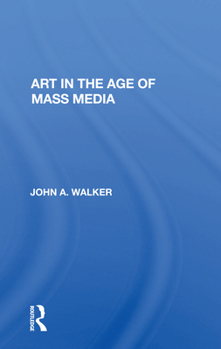Art In The Age Of Mass Media
Select Format
Select Condition 
Book Overview
This book examines certain aspects of the condition of the fine arts in the age of the mass media. It identifies the differences between these two relatively autonomous realms and discusses the ways in which they interact.
Format:Paperback
Language:English
ISBN:0367159392
ISBN13:9780367159399
Release Date:October 2020
Publisher:Routledge
Length:200 Pages
Weight:0.70 lbs.
Dimensions:0.6" x 5.9" x 8.9"
Customer Reviews
1 rating
Art in Society
Published by Thriftbooks.com User , 22 years ago
Art is a social institution. So it can't be insulated from social influences. Artists are sellers in market. They earn their bread by selling their products, artworks. Art is a language shared by social actors. Artworks can't be read without shared code to interpret the meaning of the text. They call it as convention. Convention is established through the power relationship in the market among producer (artists), intermediary (critics) and consumer (audience). In this regard, art is just another medium like mass media. The author questions when the mass media dominates the culture, what is the status of pure art? In this vein, following questions, which have haunted the field of artistic production since the 19th century, gains renewed significance. Could art secure its autonomy as modernists dreamt of? What is the social role of art? To answer those questions, the author probes into the language and market of visual art from pop art to postmodernism. Various avant-garde movements since pop art has borrowed and exploited material, subject and strategy of mass media. In turn, mass culture has utilized the art as high culture. But the position of pure art is still restricted to institutionalized sanctuary like museum, university. It's no more than high culture protected from below. It's utilized to distinguish from others by high society. It's not clear whether artwork is different from luxury goods in its utility. Adorno's word still reverberates in the circle of artists: "Today, it goes without saying that nothing concerning art goes without saying, not much without thinking. Everything about art has become problematic: its inner life, its relation to society, even its right to exist".






